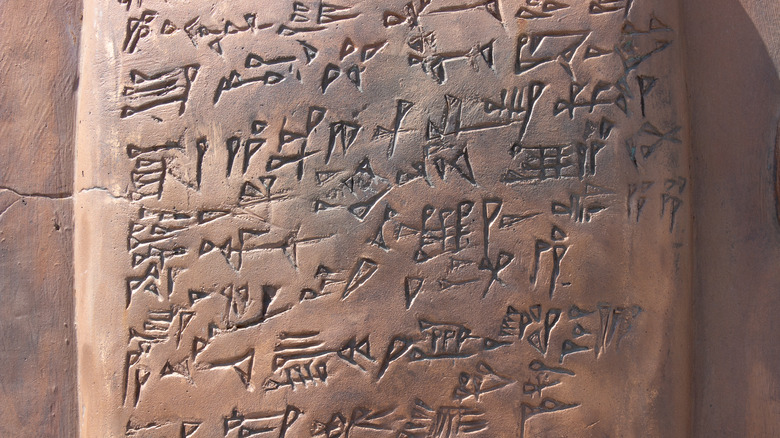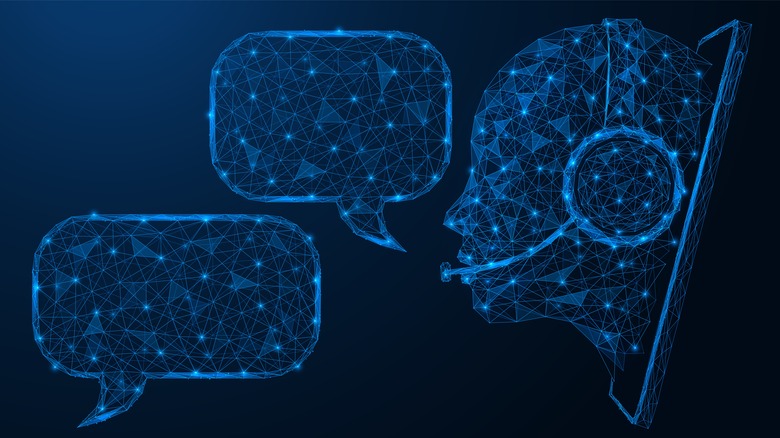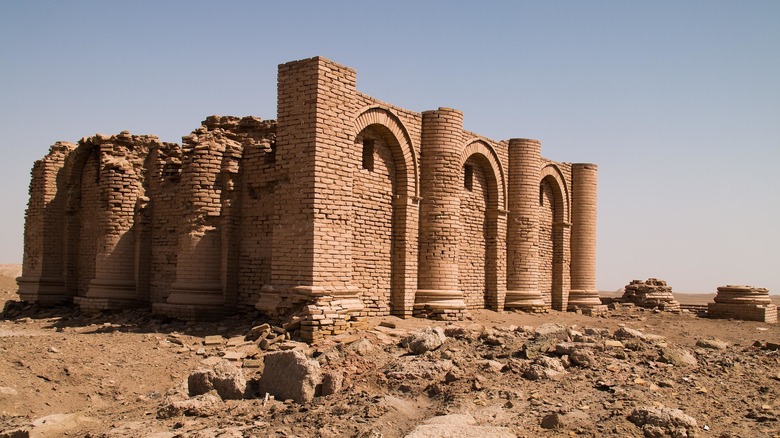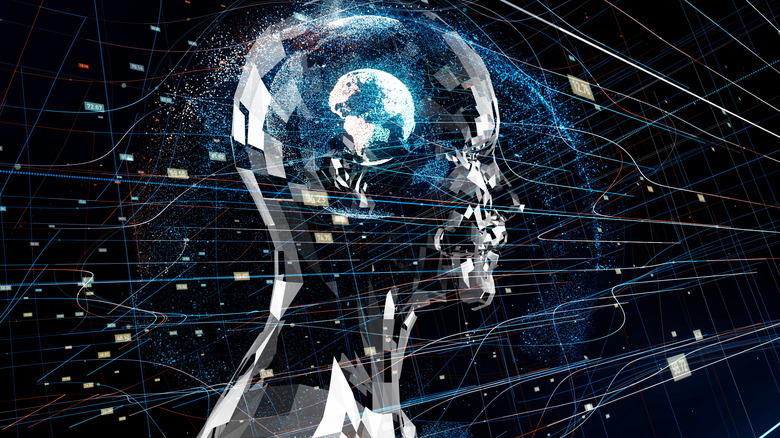AI Is Bringing Ancient Texts To Life. Here's How
With all the debate and doomsaying about ChatGPT — particularly its impact on job markets — lingering in the air, it's important to remember that artificial intelligence (AI) is a creation of human intelligence. That is, until a large language model AI outstrips human intelligence, develops sentience, silently copies itself into every single operating system across the globe, switches off the world's power grid except for all nuclear missiles everywhere, and blows us all up for good. But until then, lazy high schoolers and the Hollywood writer's strike are all we've got to fear from language-oriented AI. In other words, no biggie.
All wheel-spinning back-and-forths aside, are there any tempered, reasoned, and high-minded applications of tools like AI? Yes, but such things don't get nearly as many revenue-generating clicks as rage bait and terror bait. This is especially true if the application comes to us via nothing more glamorous than a master's thesis at Tel Aviv University in Israel. At least, that's how the project started in 2020, when Tel Aviv student Gai Gutherz and Professor Shai Gordin of Ariel University got their heads together to find a way to speed up the old-world, peskily difficult process of translating ancient texts into modern language, as The Times of Israel explains. Their target? Ancient Akkadian cuneiform: An angular, wedge-shaped full script that comprises one of the world's oldest extant written languages. Tens of thousands of clay tablets were just hanging around, untranslated. And now, Gutherz and his team have set AI to work translating them.
Piggybacking on Google's Neural Machine Translation
Despite seeming like a no-brainer use of artificial intelligence, Gai Gutherz's and Shai Gordin's project seems to be a one-of-a-kind venture — for now. But to be clear, they didn't use a ChatGPT-like large language model AI to translate ancient text, but "neural machine translation," as Gutherz's 2023 article in PNAS Nexus says. As Big Think explains, neural machine translation underpins Google Translate, which we've all used to varying degrees of success. Back in late 2016 Google Translate got an overhaul that allowed it to translate whole sentences thanks to "deep neural networks," per TechCrunch. The result, as explained in an article on the open-source platform arXiv and published by Cornell University, was a rebranded Google's Neural Machine Translation (GNMT). It translates faster, better, with 60% fewer errors, and handles rare words much more easily.
Come 2020, Gai Gutherz incorporated GNMT into his master's work at Tel Aviv University to teach it how to translate Akkadian cuneiform. And that's exactly how all this AI language stuff works: Researchers have to train machine-assisted language translators on large data sets. The more text translated, the better the translation gets — just like how practicing the piano improves piano playing. GPT-3, for instance, was trained on 300 billion human words, per Science Focus. This is why it's called a "large language model," and why it produces natural language so well.
Translating the voice of the past
At present, there are only a few hundred individuals worldwide capable of understanding and translating ancient Akkadian cuneiform. On one hand, this makes the language the perfect target for Gai Gutherz's and Shai Gordin's translation project because there are "hundreds of thousands of clay tablets" just hanging around in need of translation, per Big Think. On the other hand, there's a far smaller set of already-translated Akkadian tablets that Gutherz's modified Google's Neural Machine Translation (GNMT) can use to translate — vastly smaller than something like ChatGPT's data set, for instance.
On top of this, Gutherz's team chose to translate from Akkadian to English, which has a totally different word order. As The Language Gulper explains, Akkadian sentences employ a subject-object-verb (SOV) order, e.g., "Jerry the hamburger ate." Or, they use an object-subject-verb (OSV) order, e.g., "The hamburger Jerry ate." And so, when translating word-for-word — without changing the order, aka transliteration — Gutherz's 2020 team hit a 97% translation accuracy. But when changing word order to English — a subject-verb-object language, e.g., "Jerry ate the hamburger" — complex, longer, and nuanced sentences require a human touch to finalize the initial AI-translated text.
The recent 2023 Gutherz and Gordin study published in PNAS Nexus and available on Oxford University Press illustrates their two-step Akaddian-to-English translation process. First, they transliterate. Then, they recombine the transliteration into a properly word-ordered translation.
[Featured image by Osama Alqasab via Wikimedia Commons | Cropped and scaled | CC BY-SA 4.0]
Usefulness and criticisms
Eventually, Gai Gutherz's and Shai Gordin's Akkadian-to-English AI translation project could be as simple as pushing a button and bam: Instant obscure ancient writing in perfect modern English. This would prove especially valuable for Akkadian because it's a bridge between ancient Mesopotamian Sumerian and Aramaic languages like Hebrew, Syrian, and Phoenician. For over 3,000 years Akkadian was the dominant, shared language of the Middle East — from about 3000 B.C.E. to 100 C.E. Its written language borrows from Sumerian cuneiform, the world's first full written language, even as spoken Akkadian evolved in response to contact with Egyptian, Greek, Hittite, Persian, and more, per The Language Gulper. This is why we've got so, so many Akkadian texts ready to translate, from governmental records to literature, royal proclamations to songs, and much more.
On that note, the Times of Israel explains that Gutherz's AI displayed a higher incidence of "hallucinations" when encountering poetic or abstract works. This is one of the criticisms that philologists and translators like Nathan Wasserman, professor of Assyriology at the Institute of Archaeology at the Hebrew University of Jerusalem, levy at the project. In Wasserman's opinion, even though we live in a "post-ChatGPT" world, ancient text-translating AI is "still very far from being useful." Rather, he says, such AI could be useful for tracking statistics, calculating incidences of words, or comparing texts between different regions. Regardless, all such work is at least a helpful, productive step in the right direction.



